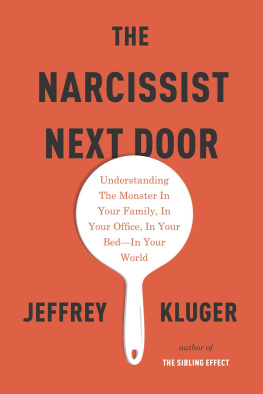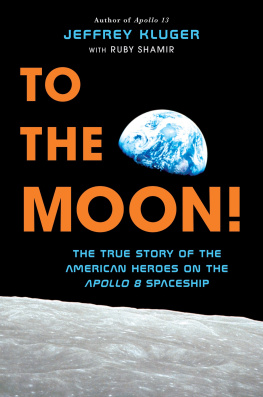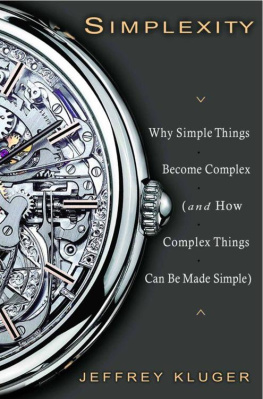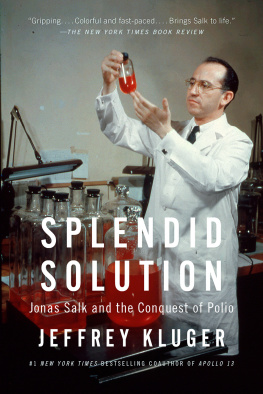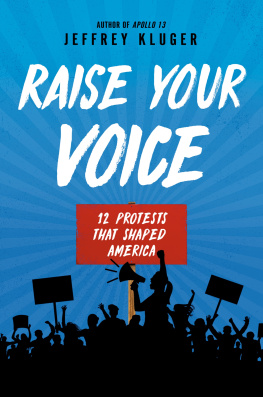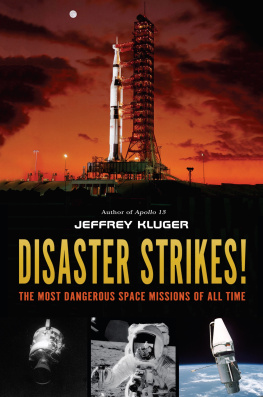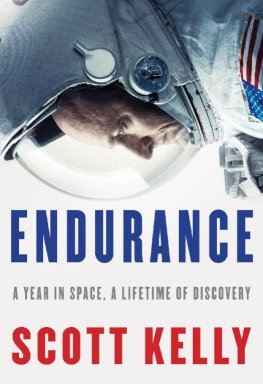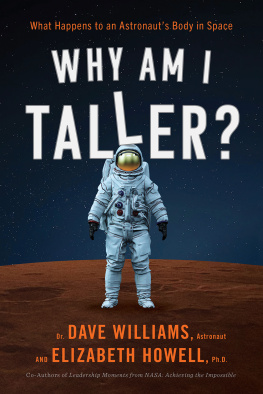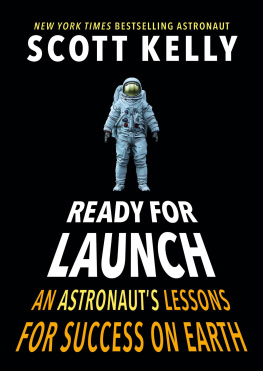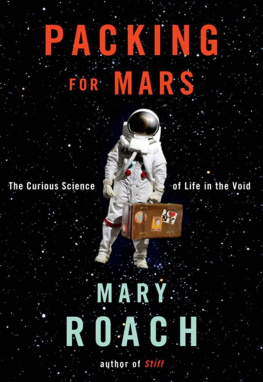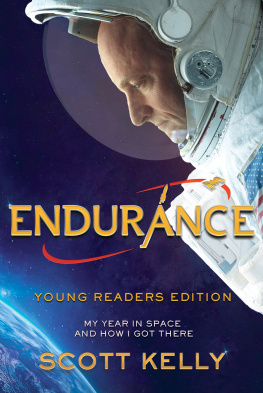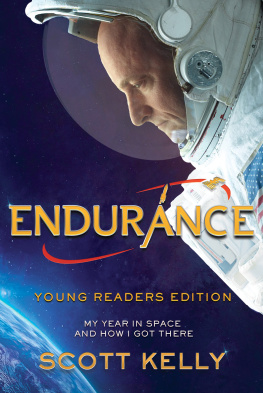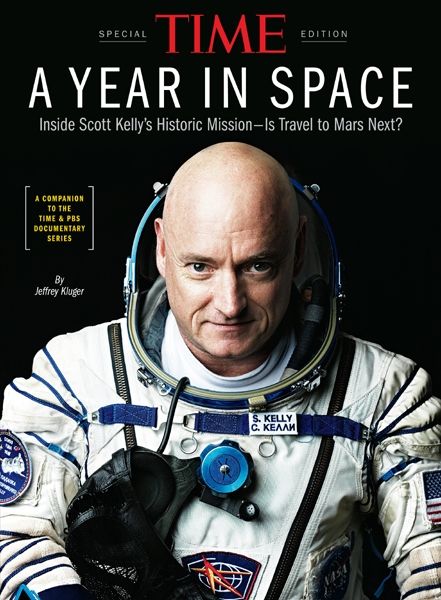
A YEAR IN SPACE
INSIDE SCOTT KELLYS HISTORIC MISSIONIS TRAVEL TO MARS NEXT?

The International Space Station holds more than an acre of solar panels, weighs close to a million pounds and carries close to seven tons of supplies.
THE SPACE-TIME CONTINUUM
SPACE TRAVEL LOOKS LIKE FUNWHAT with weightlessness and the viewsbut it can be hard on the human body. In the absence of gravity, muscles, bones, the heart and even the eyes can suffer damage. Thats why its so remarkable that astronaut Scott Kelly and cosmonaut Mikhail Kornienko spent a year aboard the International Space Station to help run the biomedical studies that will help determine whether humans are capable of making a two-and-a-half-year journey to Mars.
TIME has covered their marathon mission in the magazine and in a yearlong video series called A Year in Space , the basis for a one-hour TIME and PBS documentary in 2016 and a planned sequel in 2017. TIME editor at large Jeffrey Kluger and TIME Video supervising producer Jonathan Woods, working with director Shaul Schwarz and co-director Marco Grob, followed Scotts preparation for his takeoff in March 2015 and his experiences in orbit. Scotts identical twin brother Mark, a retired astronaut, served as a perfect control subject for the year-in-space studya man with a genetic template identical to Scotts, who spent a year growing older on Earth while his brother grew older in space. The twins study was too serendipitous an opportunity for NASA to pass up, says Kluger.
It makes for good storytelling too. Weve been trusted to have our cameras in places they dont usually go, says Woods, and what we deliver based on that trust is a rare first account of an unprecedented mission. Watch our video series at time.com/space. For information on viewing the full-length documentary, go to pbs.org/yearinspace

Nancy Gibbs, Editor of TIME
CONTENTS
ABOUT THE AUTHOR
Jeffrey Kluger is editor at large for TIME magazine and Time.com and an executive producer of the documentary series A Year in Space . He is the author of nine books, including Apollo 13 , on which the 1995 movie was based, and two novels for young adults.

This picture of an aurora was tweeted by astronaut Scott Kelly as he passed over Earth in August 2015.
Parts of this edition appeared previously in TIME and on Time.com.
BLASTING INTO THE FUTURE
NASAS GRAND PLAN TO REACH MARS INVOLVES A REMARKABLE EXPERIMENT, TWIN ASTRONAUTS AND 5,440 ORBITS AROUND EARTH

Before his launch, astronaut Scott Kelly sits inside a Soyuz simulator at the Gagarin Cosmonaut Training Center in March 2015.
WHEN SCOTT KELLY CALLED HOME from the International Space Station (ISS) before his reentry on March 2, he knew that whoever answered the phone might simply hang up on him. The calls were welcome, but the link could be lousy, with long, hissing silences breaking up the conversation. Thats what happens when youre placing your call from 250 miles above Earth while zipping along at 17,150 miles per hour and your signal has to get bounced from satellites to ground antennas to relay stations like an around-the-horn triple play. When someone answers, I have to say, Its the space station! Dont hang up! said Kelly before he left Earth.
That wasnt necessary when he called his brother Mark. Perhaps best known as the husband of former congresswoman Gabrielle Giffords, who was grievously wounded in an assassination attempt in 2011, Mark is a former astronaut who has been to space four times. He knows the crackle of an extraterrestrial signal in his ear, just as he knows the singular feeling of weightlessness, the singular sweep of Earth outside the windowand the power of 250 miles of altitude to make a person feel alone. Drive that in the flat and its nothing more than Syracuse to Boston. Fly it straight up and its a whole other thing.
But most of all, Mark, 52, knows Scott, 52which is how it is with brothers, especially when theyre identical twins, born factory-loaded with the exact same genetic operating system. The brothers connection was more important than ever in March 2015, when Scott took off for his one-year stay aboard the space station, setting a single-mission record for a U.S. astronaut.
Scott was partnered in his marathon mission with Russian cosmonaut Mikhail (Misha) Kornienko. They, in turn, were joined by a rotating cast of 13 other crew members, all of whom were aboard for anywhere from 10 days to six months, conducting experiments and reconfiguring various station modules for the arrival of privately built crew vehicles, which could come as early as 2017.
A year in space required Scott to leave behind a lot: his Houston home, his daughtersSamantha, 21, and Charlotte, 12and his girlfriend of six years, Amiko Kauderer, a NASA public-affairs officer. (He and his first wife are divorced.) But in some ways, he didnt leave Mark behind.
Ever since the Apollo days, the U.S. has vaguely discussed a crewed mission to Mars, though the target date for the grand expedition has always remained a convenient decade or two away. But on Dec. 5, 2014, NASA took a big step toward that goal with the successful uncrewed test flight of the Apollo-like Orion spacecraft, Americas deep-space ship of the future. Add to that the competition from upstarts like Elon Musks SpaceX and nations like China and India, with their own surging space programs, and the scramble for cosmic supremacy is accelerating fast.
The biggest problem with our exploratory ambitions is, simply, us. The human body is a purpose-built machine, designed for the one-G environment of Earth. Take us into the zero-G of space or the 0.38-G of Mars and it all comes unsprung. Bones get brittle, eyeballs lose their shape, hearts beat less efficiently since they no longer have to pump against gravity, and balance goes awry. At least thats what we know so far. Theres quite a bit of data [on human health] for six months in orbit, says former space-station program manager Mike Suffredini. But have we reached stasis at six months, or do things change at one year? Is there a knee in the curve we havent reached yet?
So NASA needs subjects to venture out and run the long-duration tests. In a perfect experiment, every one of those subjects would also have a control subject on the groundsomeone with, say, the exact same genes and a very similar temperament, so you could tease apart the changes that come from being aloft for 12 months from those that are a result of growing the same year older on Earth. In the Kelly brothers, NASA has that two-person sample group. The twins study didnt come up when we were selecting crew for the mission, says Suffredini. But it occurred to us later that we had this ground-based truth in Mark.
What NASA calls a ground-based truth, of course, Scott calls a big brother (by six minutes). And while the mission that concluded on March 2, 2016, was equal parts science experiment, endurance test and human drama, it was to the Kelly brothers (and only the Kelly brothers) just the latest mile in a journey theyve shared for half a century.


